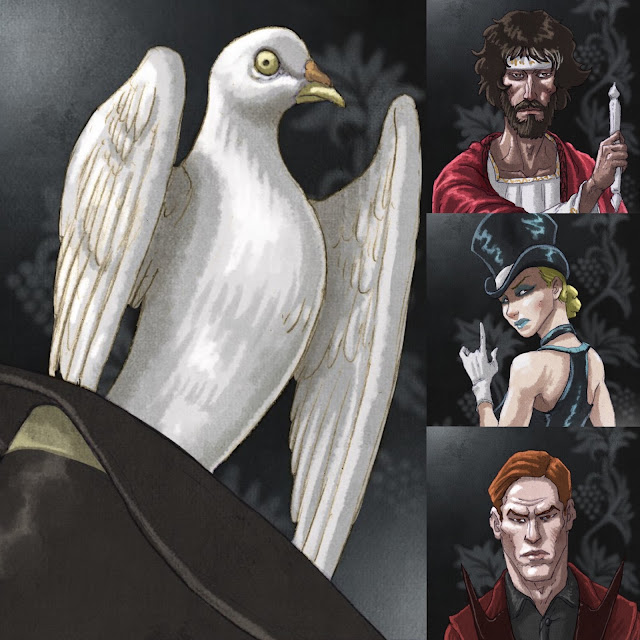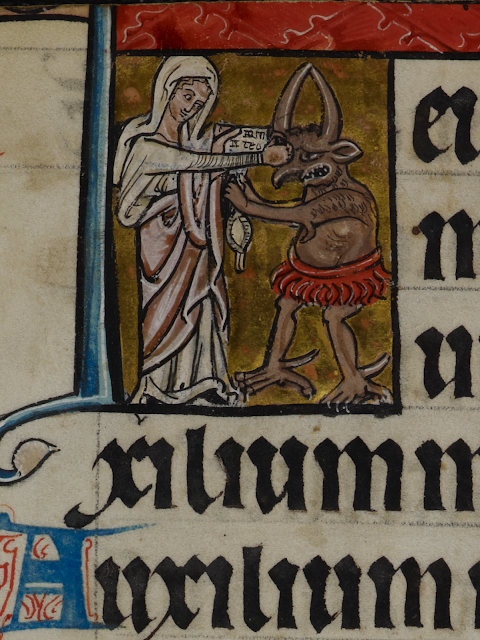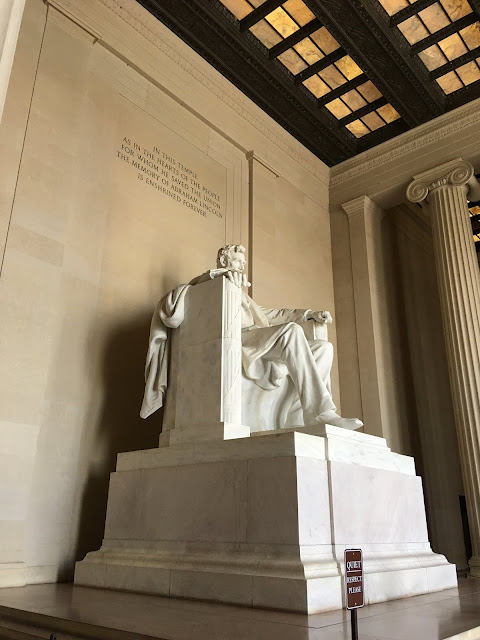The Origins of Devotion to the Virgin Mary
Q. Where have I heard this before?
"It is not my intention to enter here on that disputed point, the origin of the worship of the Madonna. Our present theme lies within prescribed limits, --wide enough, however, to embrace an immense field of thought: it seeks to trace the progressive influence of that worship on the fine arts for a thousand years or more, and to interpret the forms in which it has been clothed. That the veneration paid to Mary in the early Church was a very natural feeling in those who advocated the divinity of her Son, would be granted, I suppose, by all but the most bigoted reformers [i.e. Protestants]; that it led to unwise and wild extremes, confounding the creature with the Creator, would be admitted, I supposed by all but the most bigoted Roman Catholics. How it extended from the East over the nations of the West, how it grew and spread, may be read in ecclesiastical histories. Every where it seems to have found in the human heart some deep sympathy--deeper far than mere theological doctrine could reach--ready to accept it; and in every land the ground prepared for it in some already dominant idea of a mother-Goddess, chaste, beautiful, and benign. As, in the oldest Hebrew rites and Pagan superstitions, men traced the promise of a coming Messiah,--as the deliverers and kings of the Old Testament, and even the demigods of heathendom, became accepted types of the person of Christ,--so the Eve of the Mosaic history, the Astarte of the Assyrians,--"The mooned Ashtaroth, queen and mother both,"--the Isis nursing Horus of the Egyptians, the Demeter and the Aphrodite of the Greeks, the Scythian Freya, have been considered by some writers as types of a divine maternity, foreshadowing the Virgin-mother of Christ. Others will have it that these scattered, dim, mistaken--often gross and perverted--ideas which were afterwards gathered into the pure, dignified, tender image of the Madonna, were but as the voice of a mighty prophecy, sounded through all the generations of men, even from the beginning of time, of the coming moral regeneration, and complete and harmonious development of the whole human race, by the establishment, on a higher basis, of what has been called the 'feminine element' in society. And let me at least speak for myself. In the perpetual iteration of that beautiful image of THE WOMAN highly blessed--there, where others saw only pictures or statues, I have seen this great hope standing like a spirit beside the visible form: in the fervent worship once universally given to that gracious presence, I have beheld and acknowledgment of a higher as well as a gentler power than that of the strong hand and the might that makes the right,--and in every earnest votary one who, as he knelt, was in this sense pious beyond the reach of his own thought, and 'devout beyond the meaning of his will.'
"It is curious to observe, as the worship of the Virgin-mother expanded and gathered to itself the relics of many an ancient faith, how the new and the old elements, some of them apparently the most heterogeneous, became amalgamated, and were combined into the early forms of art; --how the Madonna, when she assumed the characteristics of the great Diana of Ephesus, at once the type of Fertility, and the Goddess of Chastity, became, as the impersonation of motherhood, all beauty, bounty, and graciousness; and at the same time, by virtue of her perpetual virginity, the patroness of single and ascetic life--the example and the excuse for many of the wildest of the early monkish theories. With Christianity, new ideas of the moral and religious responsibility of woman entered the world; and while these ideas were yet struggling with the Hebrew and classical prejudices concerning the whole sex, they seem to have produced some curious perplexity in the minds of the greatest doctors of the faith. Christ, as they assure us, was born of a woman only, and had no earthly father, that neither sex might despair; 'for had he been born a man (which was necessary), yet not born of woman, the women might have despaired of themselves, recollecting the first offence, the first man having been deceived by a woman. Therefore we are to suppose that, for the exaltation of the male sex, Christ appeared on earth as a man; and, for the consolation of womankind, he was born of a woman only; as if it had been said, "From henceforth no creature shall be base before God, unless perverted by depravity"' [Augustine, Opera Supt. 238. Serm. 63]. Such is the reasoning of St. Augustine, who, I must observe, had an especial veneration for his mother Monica; and it is perhaps for her sake that he seems here desirous to prove that through the Virgin Mary all womankind were henceforth elevated in the scale of being. And this was the idea entertained of her subsequently: 'Ennobler of thy nature!' says Dante apostrophising her, as if her perfections had ennobled not merely her own sex, but the whole human race.
"But also with Christianity came the want of a new type of womanly perfection, combining all the attributes of the ancient female divinities with others altogether new. Christ, as the model-man, united the virtues of the two sexes, till the idea that there are essentially masculine and feminine virtues intruded itself on the higher Christian conception, and seems to have necessitated the female type."
--Mrs. [Anna Brownell] Jameson, Legends of the Madonna as Represented in the Fine Arts, Forming the Third Series of Sacred and Legendary Art (London: Longman, Brown, Green, and Longmans, 1852), pp. xix-xxi.
A. Better, where haven't I heard it? Ever since Jameson published her wildly popular and oft-reprinted study of the images of the Madonna in art, it has been the standard explanation among Protestants and Catholics alike for where the devotion to the Virgin came from (presumably because they were all reading Jameson, but I stand to be corrected on this). It is, I have long been convinced, almost completely wrong (except for the bit about Ashtaroth, if not for the reasons Jameson gives), but it is only recently that I learned that it went back as far as Jameson. Funny how we are still living in the nineteenth century, isn't it? You'd think we'd have made some progress by now. Oh, wait...
"It is not my intention to enter here on that disputed point, the origin of the worship of the Madonna. Our present theme lies within prescribed limits, --wide enough, however, to embrace an immense field of thought: it seeks to trace the progressive influence of that worship on the fine arts for a thousand years or more, and to interpret the forms in which it has been clothed. That the veneration paid to Mary in the early Church was a very natural feeling in those who advocated the divinity of her Son, would be granted, I suppose, by all but the most bigoted reformers [i.e. Protestants]; that it led to unwise and wild extremes, confounding the creature with the Creator, would be admitted, I supposed by all but the most bigoted Roman Catholics. How it extended from the East over the nations of the West, how it grew and spread, may be read in ecclesiastical histories. Every where it seems to have found in the human heart some deep sympathy--deeper far than mere theological doctrine could reach--ready to accept it; and in every land the ground prepared for it in some already dominant idea of a mother-Goddess, chaste, beautiful, and benign. As, in the oldest Hebrew rites and Pagan superstitions, men traced the promise of a coming Messiah,--as the deliverers and kings of the Old Testament, and even the demigods of heathendom, became accepted types of the person of Christ,--so the Eve of the Mosaic history, the Astarte of the Assyrians,--"The mooned Ashtaroth, queen and mother both,"--the Isis nursing Horus of the Egyptians, the Demeter and the Aphrodite of the Greeks, the Scythian Freya, have been considered by some writers as types of a divine maternity, foreshadowing the Virgin-mother of Christ. Others will have it that these scattered, dim, mistaken--often gross and perverted--ideas which were afterwards gathered into the pure, dignified, tender image of the Madonna, were but as the voice of a mighty prophecy, sounded through all the generations of men, even from the beginning of time, of the coming moral regeneration, and complete and harmonious development of the whole human race, by the establishment, on a higher basis, of what has been called the 'feminine element' in society. And let me at least speak for myself. In the perpetual iteration of that beautiful image of THE WOMAN highly blessed--there, where others saw only pictures or statues, I have seen this great hope standing like a spirit beside the visible form: in the fervent worship once universally given to that gracious presence, I have beheld and acknowledgment of a higher as well as a gentler power than that of the strong hand and the might that makes the right,--and in every earnest votary one who, as he knelt, was in this sense pious beyond the reach of his own thought, and 'devout beyond the meaning of his will.'
"It is curious to observe, as the worship of the Virgin-mother expanded and gathered to itself the relics of many an ancient faith, how the new and the old elements, some of them apparently the most heterogeneous, became amalgamated, and were combined into the early forms of art; --how the Madonna, when she assumed the characteristics of the great Diana of Ephesus, at once the type of Fertility, and the Goddess of Chastity, became, as the impersonation of motherhood, all beauty, bounty, and graciousness; and at the same time, by virtue of her perpetual virginity, the patroness of single and ascetic life--the example and the excuse for many of the wildest of the early monkish theories. With Christianity, new ideas of the moral and religious responsibility of woman entered the world; and while these ideas were yet struggling with the Hebrew and classical prejudices concerning the whole sex, they seem to have produced some curious perplexity in the minds of the greatest doctors of the faith. Christ, as they assure us, was born of a woman only, and had no earthly father, that neither sex might despair; 'for had he been born a man (which was necessary), yet not born of woman, the women might have despaired of themselves, recollecting the first offence, the first man having been deceived by a woman. Therefore we are to suppose that, for the exaltation of the male sex, Christ appeared on earth as a man; and, for the consolation of womankind, he was born of a woman only; as if it had been said, "From henceforth no creature shall be base before God, unless perverted by depravity"' [Augustine, Opera Supt. 238. Serm. 63]. Such is the reasoning of St. Augustine, who, I must observe, had an especial veneration for his mother Monica; and it is perhaps for her sake that he seems here desirous to prove that through the Virgin Mary all womankind were henceforth elevated in the scale of being. And this was the idea entertained of her subsequently: 'Ennobler of thy nature!' says Dante apostrophising her, as if her perfections had ennobled not merely her own sex, but the whole human race.
"But also with Christianity came the want of a new type of womanly perfection, combining all the attributes of the ancient female divinities with others altogether new. Christ, as the model-man, united the virtues of the two sexes, till the idea that there are essentially masculine and feminine virtues intruded itself on the higher Christian conception, and seems to have necessitated the female type."
--Mrs. [Anna Brownell] Jameson, Legends of the Madonna as Represented in the Fine Arts, Forming the Third Series of Sacred and Legendary Art (London: Longman, Brown, Green, and Longmans, 1852), pp. xix-xxi.
A. Better, where haven't I heard it? Ever since Jameson published her wildly popular and oft-reprinted study of the images of the Madonna in art, it has been the standard explanation among Protestants and Catholics alike for where the devotion to the Virgin came from (presumably because they were all reading Jameson, but I stand to be corrected on this). It is, I have long been convinced, almost completely wrong (except for the bit about Ashtaroth, if not for the reasons Jameson gives), but it is only recently that I learned that it went back as far as Jameson. Funny how we are still living in the nineteenth century, isn't it? You'd think we'd have made some progress by now. Oh, wait...





Comments
Post a Comment
Thank you for taking the time to respond to my blog post. I look forward to hearing what you think!
F.B.